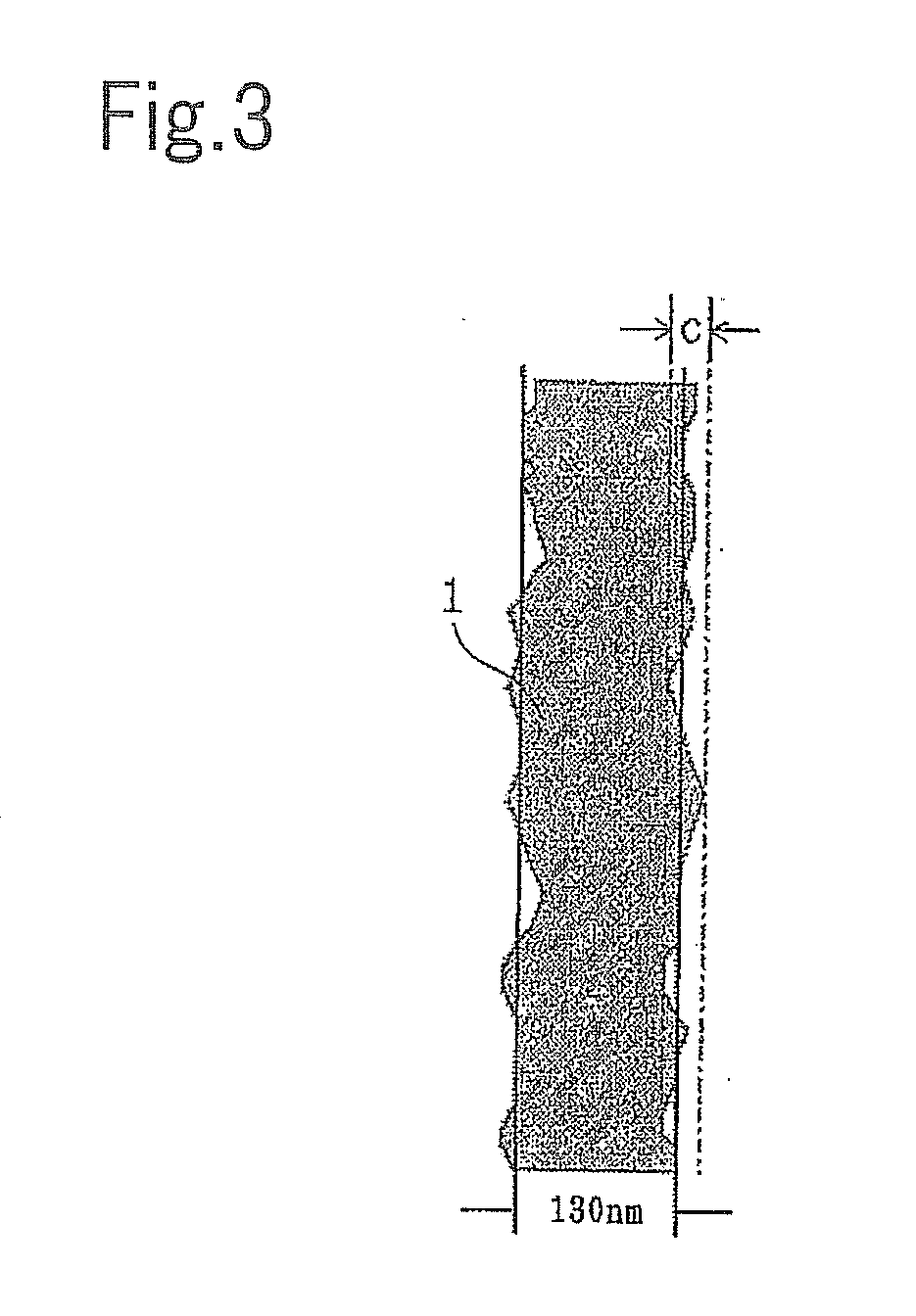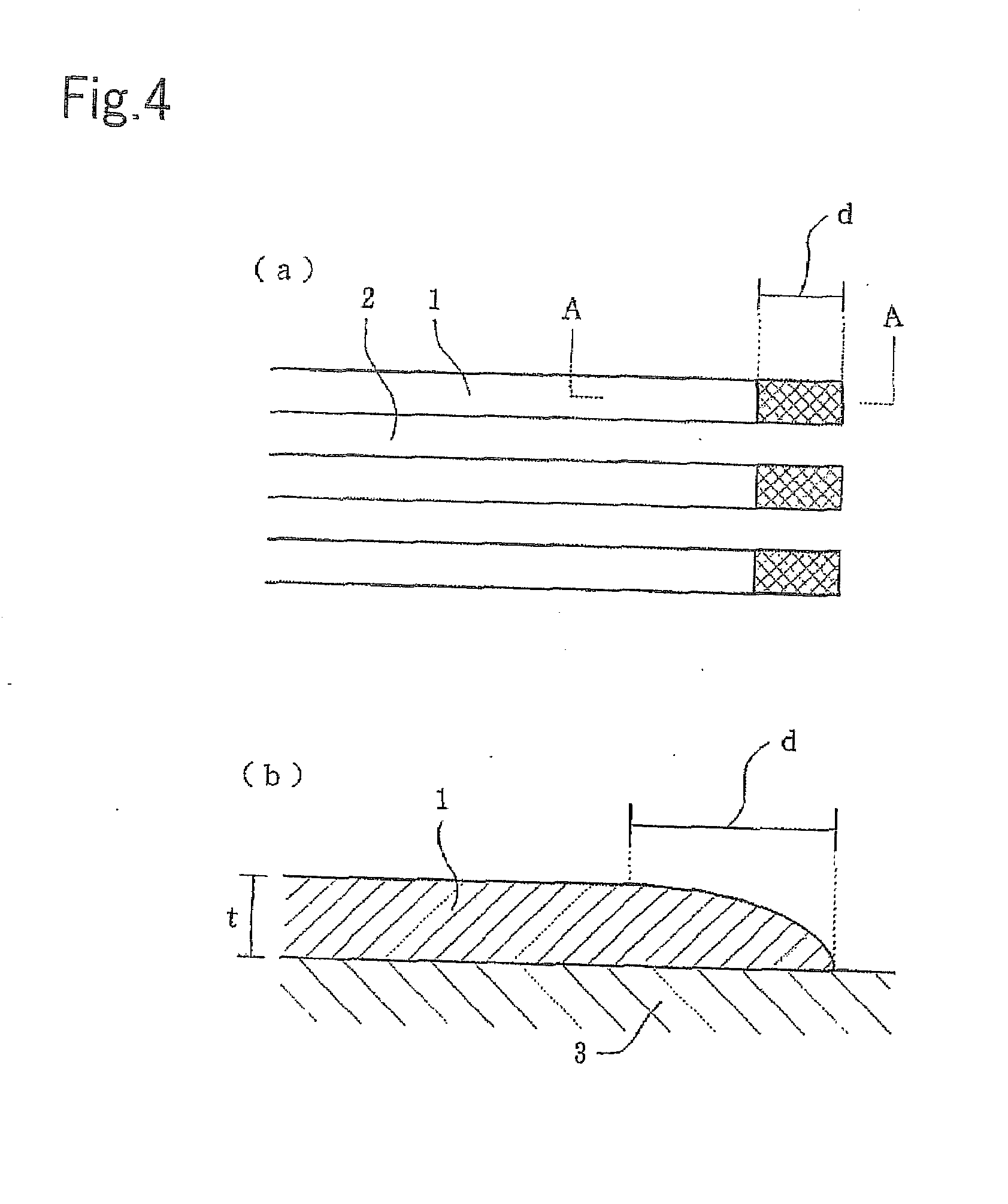Radiation-sensitive resin composition
a technology of resin composition and radiation, applied in the direction of photosensitive materials, instruments, photomechanical equipment, etc., can solve the problems of line width fluctuation that has been coming to the surface, and achieve the effect of preventing the influence of basic impurities
- Summary
- Abstract
- Description
- Claims
- Application Information
AI Technical Summary
Benefits of technology
Problems solved by technology
Method used
Image
Examples
synthesis example 1
[0148]101 g of 4-acetoxystyrene, 42 g of 4-t-butoxystyrene, 5 g of styrene, 6 g of azobisisobutyronitrile (AIBN), and 1 g of t-dodecylmercaptan were dissolved in 160 g of propylene glycol monomethyl ether, followed by polymerization at a reaction temperature kept at 70° C. for 16 hours in a nitrogen atmosphere. After polymerization, the reaction solution was added dropwise into a large amount of n-hexane, and the produced resin was solidified and purified.
[0149]Subsequently, to this purified resin, 150 g of propylene glycol monomethyl ether was added again, and 300 g of methanol, 80 g of triethylamine, and 15 g of water were further added. While the mixture was refluxed at a boiling point, a hydrolysis reaction was performed for 8 hours. After reaction, the solvents and triethylamine were distilled off under reduced pressure. The obtained resin was dissolved in acetone. Then, this solution was added dropwise into a large amount of water and solidified. The produced white powder was ...
synthesis example 2
[0152]100 g of 4-acetoxystyrene, 25 g of t-butyl acrylate, 18 g of styrene, 6 g of AIBN, and 1 g of t-dodecylmercaptan were dissolved in 230 g of propylene glycol monomethyl ether, followed by polymerization at a reaction temperature kept at 70° C. for 16 hours in a nitrogen atmosphere. After polymerization, the reaction solution was added dropwise into a large amount of n-hexane, and the produced resin was solidified and purified.
[0153]Subsequently, to this purified resin, 150 g of propylene glycol monomethyl ether was added again, and 300 g of methanol, 80 g of triethylamine, and 15 g of water were further added. While the mixture was refluxed at a boiling point, a hydrolysis reaction was performed for 8 hours. After reaction, the solvents and triethylamine were distilled off under reduced pressure. The obtained resin was dissolved in acetone. Then, this solution was added dropwise into a large amount of water and solidified. The produced white powder was filtered and dried overni...
synthesis example 3
[0155]173 g of 4-acetoxystyrene, 56 g of 4-t-butoxystyrene, 11 g of 2,5-dimethylhexane-2,5-diacrylate, 14 g of AIBN, and 11 g of t-dodecylmercaptan were dissolved in 240 g of propylene glycol monomethyl ether, followed by polymerization at a reaction temperature kept at 70° C. for 16 hours in a nitrogen atmosphere. After polymerization, the reaction solution was added dropwise into a large amount of n-hexane, and the produced resin was solidified and purified, followed by drying at 50° C. for 3 hours under reduced pressure. Subsequently, to 190 g of this purified resin, 150 g of propylene glycol monomethyl ether was added again, and 300 g of methanol, 100 g of triethylamine, and 15 g of water were further added. While the mixture was refluxed at a boiling point, a hydrolysis reaction was performed for 8 hours. After reaction, the solvents and triethylamine were distilled off under reduced pressure. The obtained resin was dissolved in acetone. Then, this solution was added dropwise i...
PUM
| Property | Measurement | Unit |
|---|---|---|
| pore size | aaaaa | aaaaa |
| temperature | aaaaa | aaaaa |
| wavelength | aaaaa | aaaaa |
Abstract
Description
Claims
Application Information
 Login to View More
Login to View More - R&D
- Intellectual Property
- Life Sciences
- Materials
- Tech Scout
- Unparalleled Data Quality
- Higher Quality Content
- 60% Fewer Hallucinations
Browse by: Latest US Patents, China's latest patents, Technical Efficacy Thesaurus, Application Domain, Technology Topic, Popular Technical Reports.
© 2025 PatSnap. All rights reserved.Legal|Privacy policy|Modern Slavery Act Transparency Statement|Sitemap|About US| Contact US: help@patsnap.com



